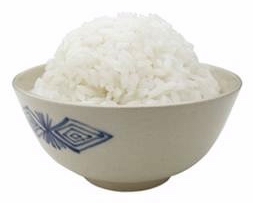 Rice imported from certain countries contains high levels of lead that could pose health risks, particularly for infants and children, who are especially sensitive to lead’s effects, and adults of Asian heritage who consume large amounts of rice, scientists said at the American Chemical Society Meeting this week.
Rice imported from certain countries contains high levels of lead that could pose health risks, particularly for infants and children, who are especially sensitive to lead’s effects, and adults of Asian heritage who consume large amounts of rice, scientists said at the American Chemical Society Meeting this week.Tsanangurayi Tongesayi, Ph.D., who headed the analysis of rice imported from Asia, Europe and South America, pointed out that imports account for only 7 per cent of the rice consumed in the United States.
With vast rice fields in Louisiana, California, Texas, Arkansas and Mississippi, the US is a major producer and exporter of the grain.
However, imports of rice and rice flour are increasing by more than 200 per cent since 1999 ? and rice is the staple food for three billion people worldwide, he added.
“Such findings present a situation that is particularly worrisome given that infants and children are especially vulnerable to the effects of lead poisoning,” Dr Tongesayi said.
“For infants and children, the daily exposure levels from eating the rice products analysed in this study would be 30-60 times higher than the FDA’s provisional total tolerable intake (PTTI) levels. Asians consume more rice, and for these infants and children, exposures would be 60-120 times higher. For adults, the daily exposure levels were 20-40 times higher than the PTTI levels.”
Tongesayi’s team, which is with Monmouth University in New Jersey, found that levels of lead in rice imported into the United States ranged from 6 to 12 milligrams/kilogram.
From those numbers, they calculated the daily exposure levels for various populations and then made comparisons with the FDA’s PTTI levels for lead. They detected the highest amounts of lead in rice from Taiwan and China.
Samples from the Czech Republic, Bhutan, Italy, India and Thailand had significantly high levels of lead as well. Analysis of rice samples from Pakistan, Brazil and other countries were still underway.
Because of the increase in rice imports into the United States, Tongesayi said that rice from other nations has made its way into a wide variety of grocery stores, large supermarket chains and restaurants, as well as ethnic specialty markets and restaurants.






